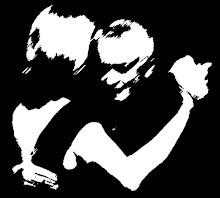By age 14, Vardaro was playing violin to silent movies and had met Rodolfo Biagi. At age 17 he was invited to join Juan Maglio's orchestra, followed next year by joining Roberto Firpo. Then at age 21, in 1922, he joined Pedro Maffia, where he played with Osvaldo Pugliese.
1929 - 1931: The Vardaro-Pugliese Sextet had formed with other prominent musicians, but in 1933 Pugliese left, and Vardaro formed a new sextet that included the 18 year old Aníbal Troilo. Teh sextet was popular in cafes, cabarets and radio. In 1938 he briefly payed with Lucio Demare, and in 1942 joined Osvaldo Fresedo's orchestra where he played for several years.
During 1955- 1961, he alternated playing in the Astor Piazzolla and Carlos Di Sarli orchestras.
Yet, despite a pedigree like this, his sextet made only one test record - Tigre viejo, with the RCA Victor recording company in 1933. It was deemed of little commercial value (looks like he was ahead of his time), so the disc was given to a member of the sextet. Eventually his family preserved it in olive oil! Much later it was cleaned up with Vaseline, and that's what you can listen to below. Sadly, his sextet did not record any other music.
Michael Lavocah wrote "Tigre viejo is the closest thing to jazz that tango has to offer: six men playing on the edge of their seats, and just about keeping the whole thing on the rails." See what you think:
The arrangement is quite experimental. Remember, it was recorded in 1933! Early in the piece, the sounds of a later Pugliese can be heard (although he was no longer in the sextet for the recording), and later you may pick up elements of Troilo. Certainly quite jazzy in places.
Bob
For more information on Elvino Vardaro:
Michael Lavocah Tango Stories: Musical Secrets
